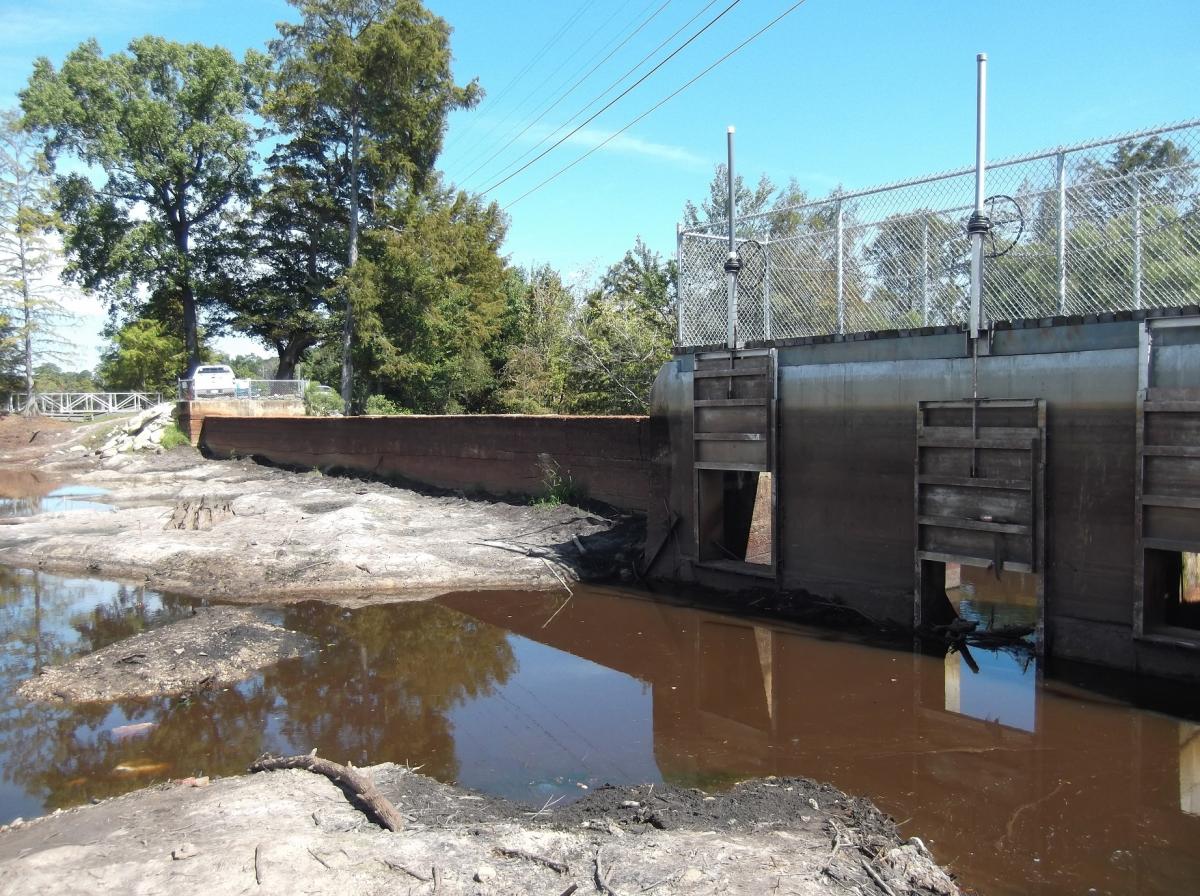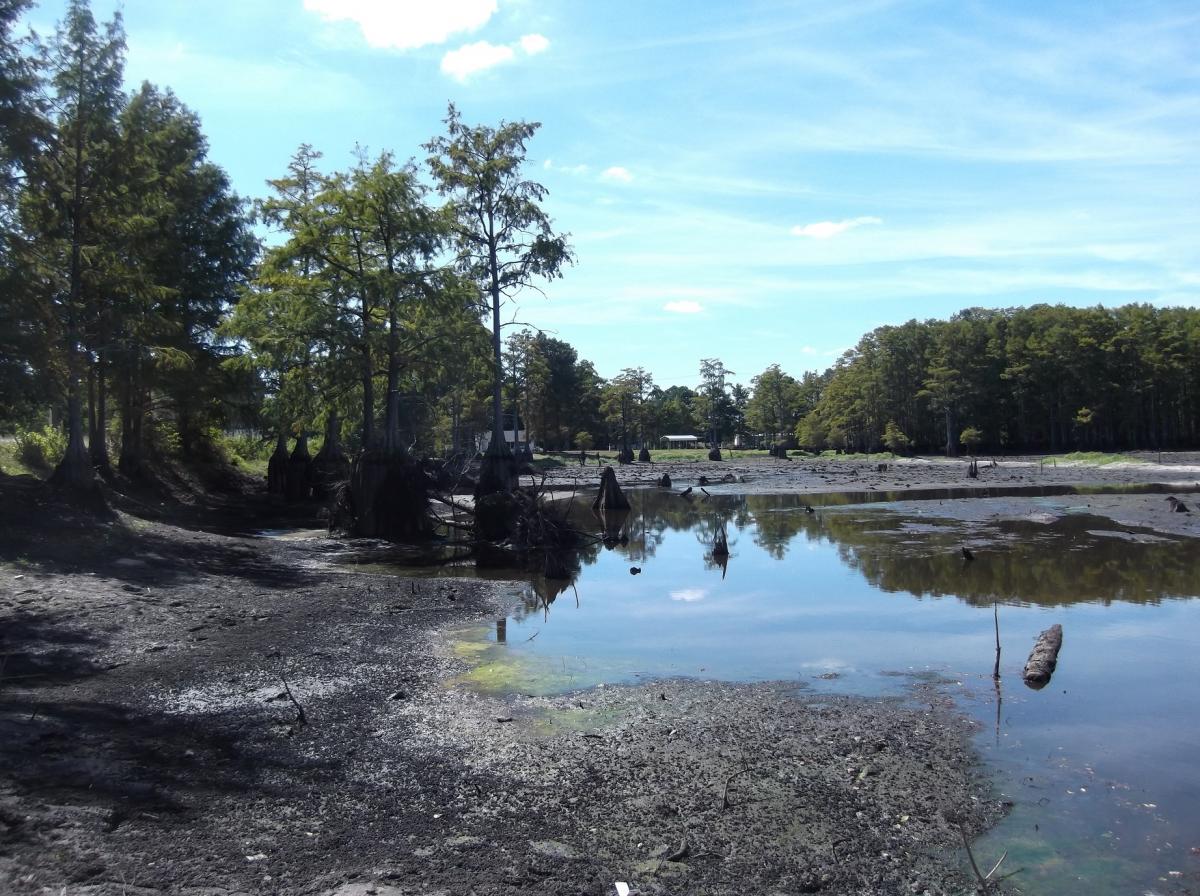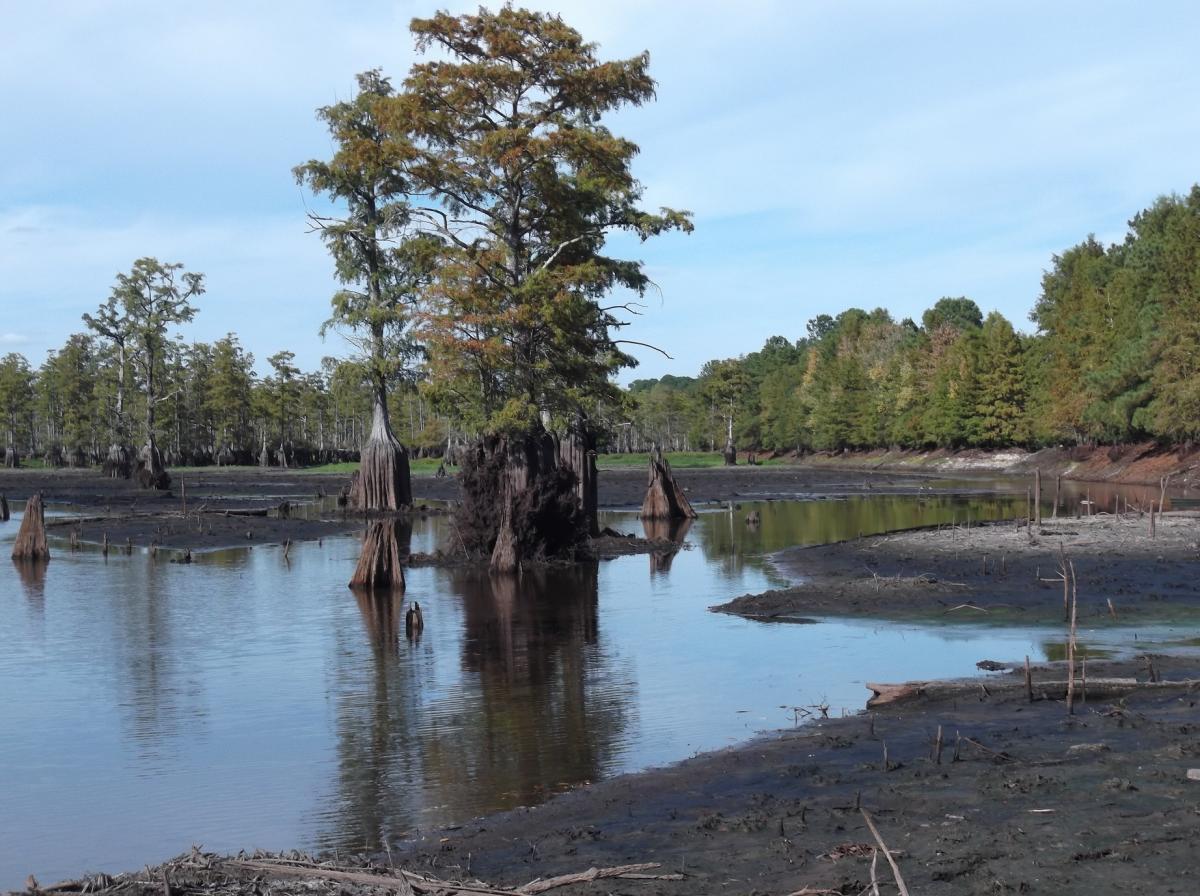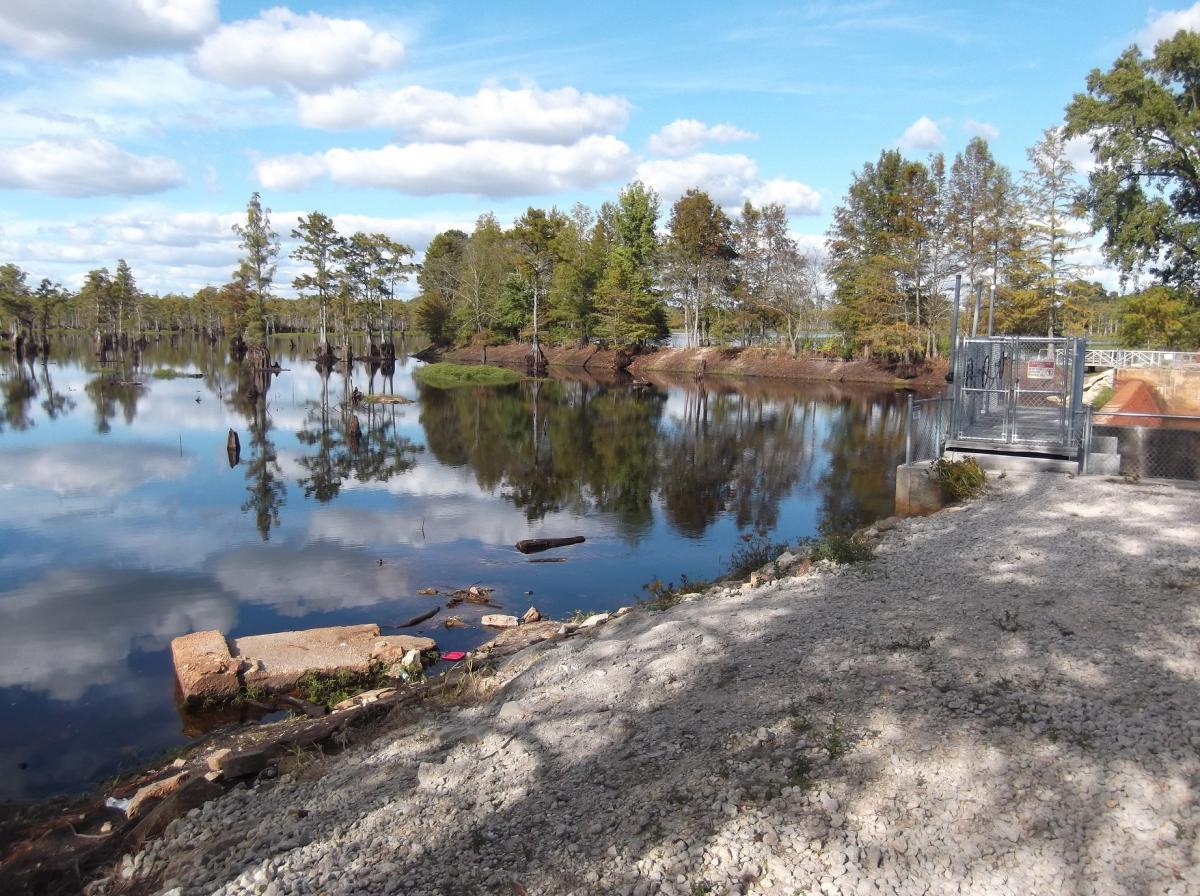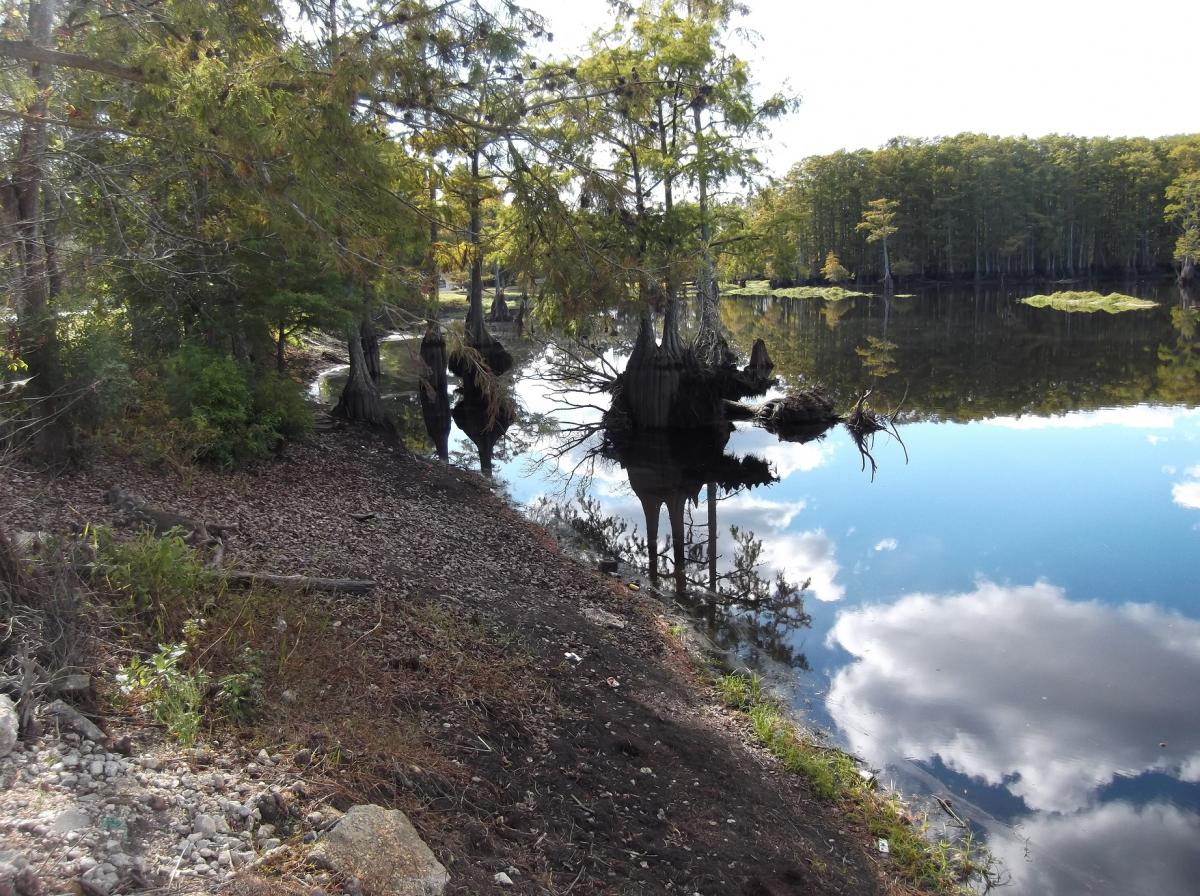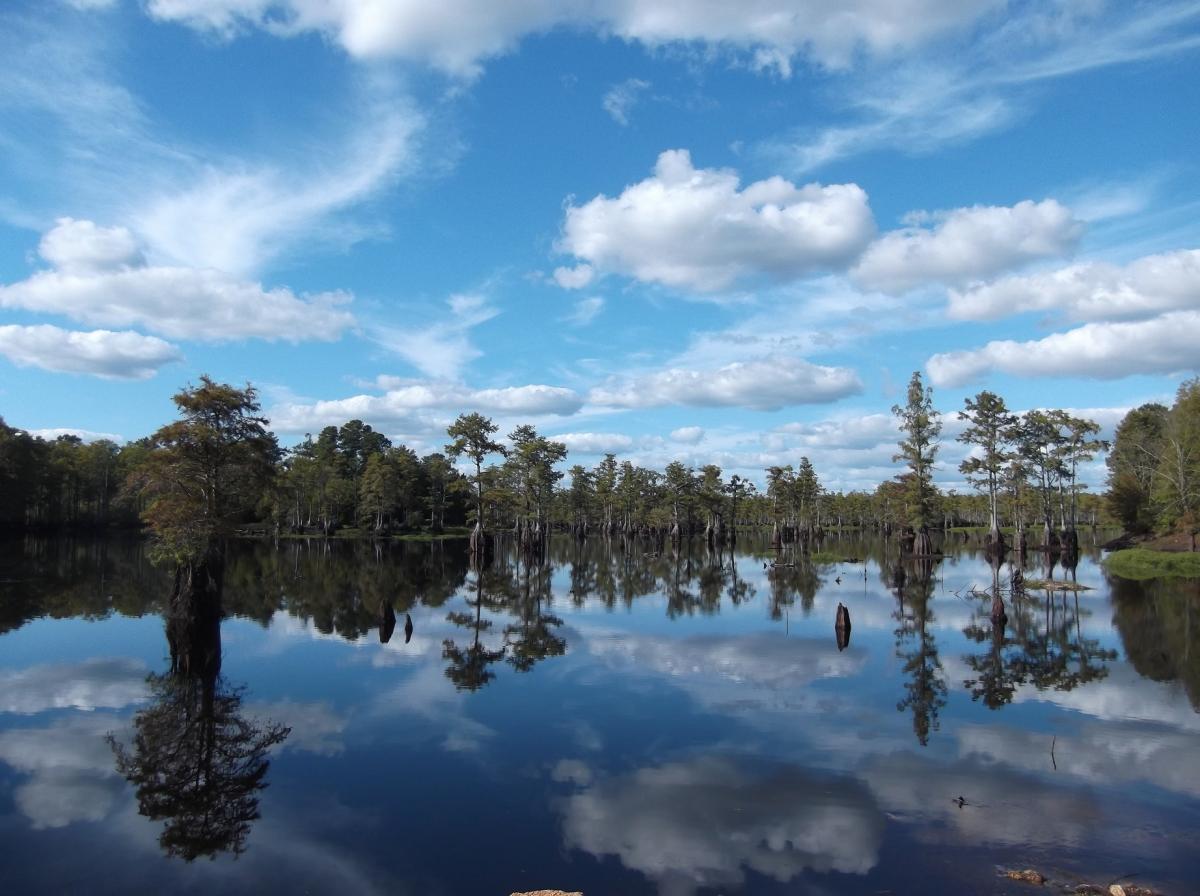Rhodes Pond Tragedy
#1
 Guest_catfishcain_*
Guest_catfishcain_*
Posted 02 October 2013 - 04:23 PM
Now as of Sept 29, 2013 the water has gone back up several feet but is still pretty low. But I figured I would let everyone know just incase anyone was planning a trip to Rhodes Pond any time soon. It might be more productive to find a different location.
First 4 pics are from Sept 18th when the water was down and the last 3 are from Sept 29th.
#2
 Guest_gerald_*
Guest_gerald_*
Posted 02 October 2013 - 07:40 PM
#3
 Guest_Dustin_*
Guest_Dustin_*
Posted 02 October 2013 - 07:51 PM
#5
 Guest_EricaLyons_*
Guest_EricaLyons_*
Posted 02 October 2013 - 10:25 PM
Would you mind posting a report of what hook and bait you used in the microfishing section? I've had the worst luck being able to reel in the smaller sunnies.That is really good to know Dustin, thanks for sharing. I did manage to catch one Enneacanthus obesus (Banded Sunfish) right below the dam among the rocks while micro fishing. It really surprised me when I caught it.
It's too bad to hear that about the pond. Is this the first time they've done that, or is it something that happens frequently and we can expect the pond to bounce back from? At least the heat broke recently and we've been having high temperatures in the 70's. Today's high was 82 I think. That's not nearly as bad as the 100+ we were getting just a month ago.
#6
 Guest_Doug_Dame_*
Guest_Doug_Dame_*
Posted 03 October 2013 - 12:36 AM
Hope it comes back soon.
#7

Posted 03 October 2013 - 05:36 AM
I know there are varying opinions of dams and their value here on the ol' forum, but since I wasn't around to see the initial damage caused by its construction, I seem to be sympathizing with the ecosystem formed behind the dam. These pictures have really taught me one thing. I spent most o' my twenties in Florida, and did a lot of hiking there. Never did I realize just how deep below the surface some of those cypress trunks go. (Those are some truly intriguing trees. Beautiful, too.) The third pic really shows off the depths from which they will rise to the surface. Just how deep was the water there? What fish were most likely to call those things home? Do different "elevations" of the trunk host different critters?
"No thanks, a third of a gopher would merely arouse my appetite..."
#8
 Guest_Kanus_*
Guest_Kanus_*
Posted 03 October 2013 - 08:49 AM
If anything, it may depress numbers of larger predatory fish, and the next few years could be FANTASTIC for small aquarium-sized natives. But maybe I'm just an optimist...
#9
 Guest_gerald_*
Guest_gerald_*
Posted 03 October 2013 - 11:14 AM
While that does stink, it looks like there is still a fair bit of habitable (albeit shallow) water left. If the water is already going back up, I bet most species are just fine and will bounce back pretty quickly. At least it wasn't during the spawning season! If anything, it may depress numbers of larger predatory fish, and the next few years could be FANTASTIC for small aquarium-sized natives. But maybe I'm just an optimist...
The dam spillway gates were rebuilt about 2010. This past summer the gates were not opened far enough during a heavy storm, and the pond overflowed, flooding highway NC-301 which is the road just in front of the dam spillway. The recent draining was for repairing damage that occurred during that flood, if I understand correctly. The Friends of Rhodes Pond Facebook Page has more info.
The dam was built mid-1700's. Bald cypress can survive long-term inundation after they're a few years old, but young seedlings can only tolerate short-term flooding. So the trees in the deep water parts of the pond are probably older than the dam.
I've been there many times over the past 20 years and have never caught E. obesus, but have seen plenty of E. gloriosus. If you catch an obesus please take some pics to post. I've also never caught a mud sunfish or dollar there, but it looks like they ought to be there.
#10
 Guest_gerald_*
Guest_gerald_*
Posted 03 October 2013 - 11:36 AM
#11
 Guest_catfishcain_*
Guest_catfishcain_*
Posted 03 October 2013 - 11:54 AM
I will say I did see a nice sized Eastern Mudminnow below the dam one night when I was shining a flashlight into the shallows amongst the grass. So I bet below the dam is still the same for Mudminnows.
From what I could see for a depth of the lake, there were parts that were around 8 to 10 feet easy and a few spots that might of been a few feet deeper but I didn't tread through the water to find out how deep it went. A great deal was around 6 feet Id say give or take a foot.
Gerald would be the best guy for knowing what species are located there.
And Im not to knowledgable on the ecosystem of a cypress tree. But I do remember over a year ago collecting with a net around the base of a cypress tree and caught all sorts of small fish from pickerels and sunfish to darters and seen a shiner caught.
Oh I did catch a Banded Sunfish below the dam while the pond was drained. It was among the rocks directly below the dam. I was jigging a small piece of powerbait worm on a tanago hook between rocks and it toke the bait. Ill make sure to post pics when I do the micro fishing article.
#12
 Guest_catfishcain_*
Guest_catfishcain_*
Posted 03 October 2013 - 11:56 AM
When I was there at first it was well below 4 feet. Im 6'3" and stood in parts that you could see the old water line above my head. Hopefully your right though Gerald about the plants.More Info: http://fayobserver.c.../07/05/1267005. This article says that NC-WRC has been keeping the water level down about 4 ft below normal this summer after the flooding in June, so hopefully there will be enough native aquatic veg survival that both the veg and veg-dependent fish can recover in a couple years.
#14
 Guest_gerald_*
Guest_gerald_*
Posted 04 October 2013 - 10:15 AM
#15
 Guest_gerald_*
Guest_gerald_*
Posted 27 January 2014 - 12:12 PM
Reply to this topic
1 user(s) are reading this topic
0 members, 1 guests, 0 anonymous users


